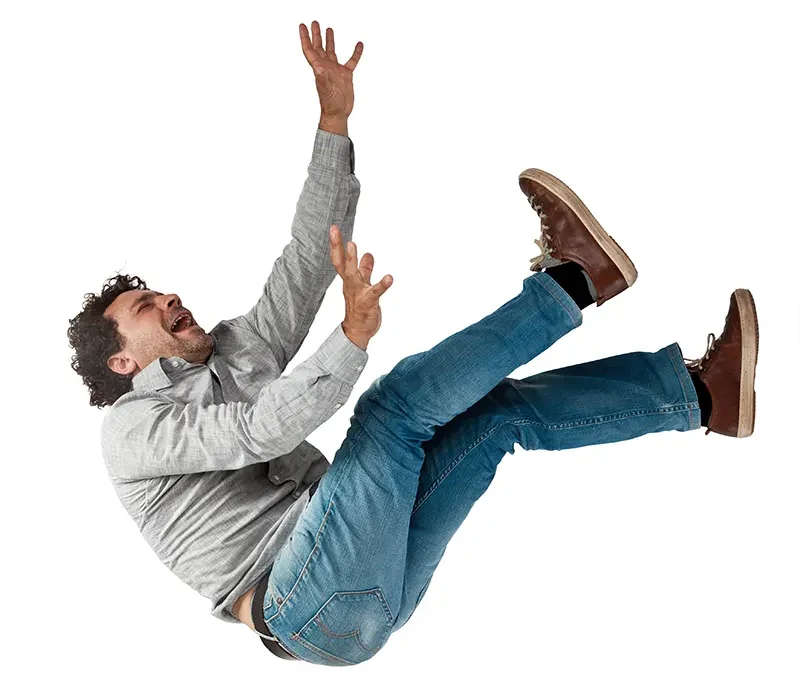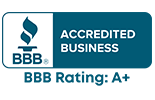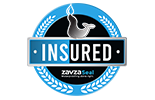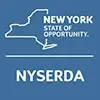Every year, tripping and falling accidents lead to injuries, liability claims, and costly lawsuits across New York. Whether it’s an uneven sidewalk in Brooklyn, a cracked step in Queens, or a slippery path in the Bronx, property owners have legal obligations—and Zavza Seal helps you meet them.
In this guide, we’ll explain:
- What makes a condition a legal hazard in New York
- Key laws and rulings governing tripping and falling
- How Zavza Seal’s services help you prevent accidents and stay compliant
Understanding Tripping and Falling Hazards and Legal Duty in New York
Under New York premises liability law, property owners—including homeowners and business operators—have a legal duty of care to maintain their premises in a reasonably safe condition for lawful visitors. This includes routinely inspecting for hazards like uneven sidewalks, raised pavement, obstructed walkways, or debris that can cause tripping accidents.
Owners must act if they:
- Created the hazard
- Had actual knowledge of it
- Or should have known about it through reasonable inspection (constructive notice)
If a visitor falls due to these hazards, the owner may be liable—especially when the condition is not obvious or properly marked.
Important Laws and Time Limits in New York
Here’s what every property owner should know:
1. Premises Liability and Statute of Limitations
If someone is injured due to tripping, you typically have three years from the date of the injury to file a lawsuit.
2. Government Property Rules
Accidents on public or municipal property involve stricter rules:
- You must file a Notice of Claim within 90 days.
- Then you must file a lawsuit, usually within one year and 90 days or similar shorter windows.
3. Comparative Negligence
New York uses pure comparative negligence. If a claimant is found partially at fault, their compensation is reduced by their percentage of blame.
4. “Open and Obvious” Defense
Property owners may argue they’re not liable if the hazard was “open and obvious”—meaning any reasonable person should have seen and avoided it. That said, distractions or violations of safety laws may rebut this defense.
Why Tripping Hazards Matter
Tripping hazards go beyond minor inconvenience—they pose serious risks:
- They can lead to injuries like broken bones, head trauma, or worse—especially among seniors.
- They can result in costly premises liability lawsuits, with potential compensation covering medical bills, lost wages, and pain and suffering.
Prevention is the best solution for safety, liability protection, and peace of mind.
How Zavza Seal Helps Prevent Tripping Hazards
That’s where Zavza Seal steps in. Here’s how our team ensures your property is safe, compliant, and protected:
1. Expert Property Inspections
We conduct thorough audits—identifying uneven surfaces, cracked sidewalks, raised edges, obstructive debris, poor lighting, and more. Our inspections also account for seasonal dangers like ice and wet floors.
2. Professional Repairs & Surface Leveling
Our team repairs raised pavement, fills cracks, levels walkways, and resurfaces worn concrete and sidewalks. This ensures a smooth, hazard-free path for pedestrians.
3. Preventive Maintenance
We apply durable sealants and anti-slip coatings, reducing future wear and preventing cracks, erosion, or shifting that can cause new tripping hazards.
4. Safety Upgrades & Signage
Improved lighting, marked transitions (like step edges), and temporary warning signs during repairs help prevent accidents and protect against liability—even before permanent fixes are completed.
Real-World Benefits of Partnering with Zavza Seal
| Challenge | How Zavza Seal Helps |
|---|---|
| Uneven or cracked walkways | We level, restore, and seal concrete for smooth, safe surfaces |
| Seasonal hazards (ice, snow, water) | We apply slip-resistant coatings and improve drainage |
| Liability concerns | Repairs, maintenance, and visible safety measures show you’re fulfilling your duty of care |
| Safety and compliance | We help property owners meet legal standards and avoid costly lawsuits |
By partnering with Zavza Seal, you proactively manage risks while enhancing the safety and aesthetics of your property.
Frequently Asked Questions
** Do I need to report an accident to sue later?**
No. Under New York law, you can still file a claim even if no accident report was made—but early documentation helps strengthen your case.
** What about accidents on public property?**
If someone trips on city sidewalks or municipal grounds, special deadlines apply—like a 90-day notice requirement—so fast action is essential.
** Can lighting or distractions affect liability?**
Yes. Courts consider poor lighting as a contributing factor. Meanwhile, “open and obvious” conditions might not absolve liability if safety standards are violated.
Final Thoughts
Tripping and falling hazards are serious—not just for safety reasons, but also legal and financial ones. In New York, property owners face clear duties under premises liability law—and failure to act can lead to injury claims, lawsuits, and costly damages.
Zavza Seal helps you stay ahead of risks with expert inspections, timely repairs, safety enhancements, and preventive maintenance. Let us worry about hazards so you can rest assured that your property is safe and lawful.
Protect your property. Prevent accidents. Preserve peace of mind.








